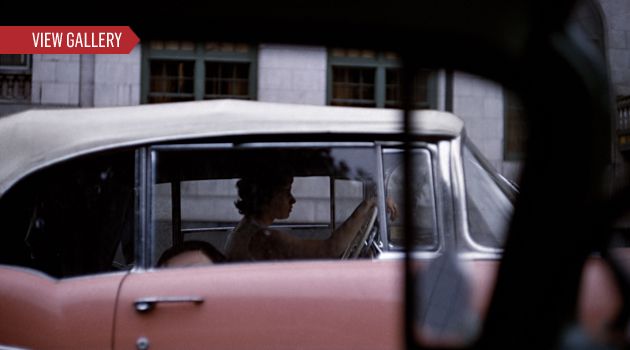
No one was happier than I was when digital cameras came along. It's not that I'm a fan of the result so much. I just like that screen on the back of the camera that shows you right away what you just took. It's the chance for an instant do-over that attracts me.
To put it mildly, when it comes to film cameras, I am an idiot. I could load a roll of film in a camera, and after that it was anybody's guess what might happen. The drugstore where I dropped off film used to affix a decal to finished prints that were blurred or over- or underexposed. The message on that sticker said, more or less, "We tried, but this one was really not our fault." I once got back a set of prints where nearly every exposure bore that little decal. They must have thought they were dealing with a blind man.
That said, I love Kodachrome film, and I mourn its passing, even while I admit that it was duffers like me who did it in. Addicted to convenience, we jumped ship as soon as easier, cheaper means of taking photographs came along. So over the past two decades, the market dried up. With almost no one to sell it to, Kodak stopped making the film a year ago. Last month, Dwayne's Photo in Parsons. Kans., the last company on earth that still processed Kodachrome, stopped developing any more rolls. This won't change the way I take pictures, but it will certainly affect how much I enjoy them—at least those taken by people who know what they're doing.
You don't need to be a good photographer to appreciate Kodachrome. All you need is a good pair of eyes. It's tempting to wax romantic and say that this particular film made life look even better than it actually looks. (Let's reserve that accolade for Technicolor, a process that truly did make everything look like Oz.) What you can say without being the least bit mushy is that Kodachrome images seem alive. They possess a depth and a richness that digital images—and most other film—can only approximate but never match. This seems to be true of everything digital. I know it's all supposed to be about how much information a digital device can carry, but you can't tell me that a CD on any system sounds better than a vinyl record played through a tube amp. My ears say no every time.
Kodachrome also has terrific archival value. Anyone who has hauled out the family photo album and bemoaned all those faded images of long ago Christmases should appreciate the staying power of Kodachrome when properly preserved. Nothing else could match it.
Just examine the Kodachrome images shot by the Farm Security Administration photographers in the waning days of the Depression. They look like they were taken yesterday. Or look again at Steve McCurry's iconic photograph of the Afghan refugee girl that wound up on the cover of National Geographic in 1985. That picture absolutely glows with life, and while no small part of its greatness belongs to McCurry—who incidentally shot the last roll of Kodachrome produced by Kodak—he would probably be the first to tell you that the particular film he used played a big part as well.
Over the course of its 75-year existence, Kodak's best-known film preserved some of the landmark events of our time. It captured the burning of the Hindenberg. It was the film in Abraham Zapruder's movie camera when he caught the Kennedy assassination. Paul Simon sang its praises. The U.S. government named a national park after it. It deserves nothing less.
Kodachrome is dead. Long live Kodachrome.
Uncommon Knowledge
Newsweek is committed to challenging conventional wisdom and finding connections in the search for common ground.
Newsweek is committed to challenging conventional wisdom and finding connections in the search for common ground.
About the writer
To read how Newsweek uses AI as a newsroom tool, Click here.





